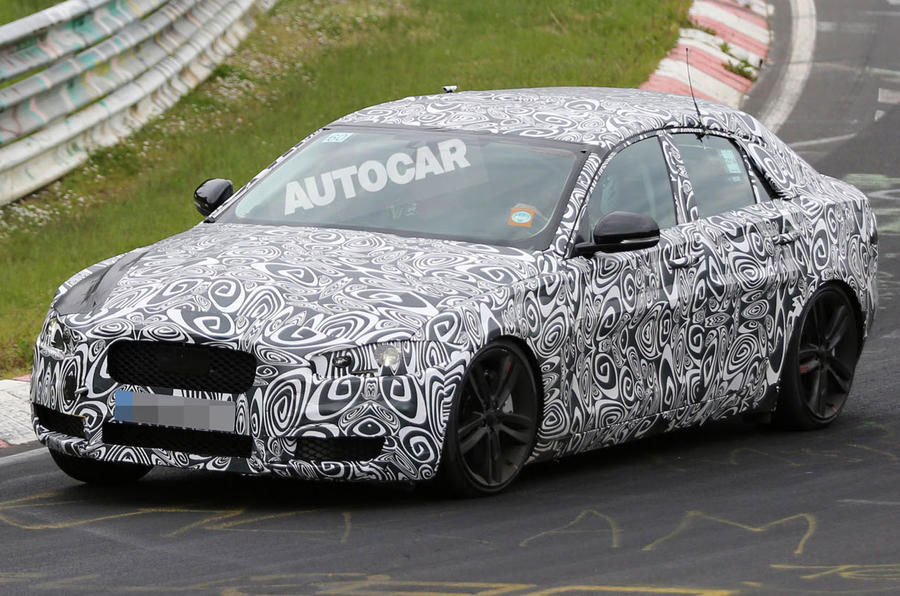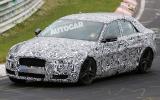The new Jaguar XE will return as much as 75mpg on the EU combined cycle and have a CO2 rating of below 100g/km, according to the British car maker.
Powered by the all-new 2.0-litre tubodiesel Ingenium engine and built around an aluminium body structure, the XE should better the frugality of today’s most economical BMW 3-series and Mercedes-Benz C-class models, the new baby Jaguar’s main competition.
Jaguar has also revealed that aluminium will make up 75 per cent of the XE’s body structure. The company says the XE’s body engineering is born out of “Jaguar’s fifth-generation bonded and riveted aluminium technology”.
Jaguar also says it has developed a new high-strength aluminium alloy called RC5754, which contains a very high proportion of recycled aluminium. Jaguar aims to use 75 per cent recycled aluminium in its future models by 2020.
Mark White, Jaguar’s chief technical specialist, body complete, said: “This gives us a body structure with unrivalled low weight. It’s light but also immensely strong, with extremely high levels of torsional stiffness.
“We’ve made sure our aluminium-intensive body structure exceeds all global safety standards without compromising on vehicle design or refinement.”
Jaguar claims the XE “will be the true driver’s car in the segment” and says this contention is backed up by the car’s hardware. The XE gets double-wishbone front suspension, “with many of the components made from cast and forged aluminium”, according to Jaguar.
The XE’s electrically assisted steering system is said by Jaguar to be the “latest generation… which delivers a better steering feel, variable steering damping, ease of low-speed manoeuvring and a range of active safety and advanced driver assistance functions”.
Jaguar says it has developed what it calls All Surface Progress Control (ASPC), which it claims as a “world-first technology”. ASPC is said to “gain traction with far less drama than a human driver and without the driver using the pedals”.
New Jaguar's frugal turbodiesel engine laid bare
Balancer shafts - The new Ingenium engine gets balancer shafts to achieve as close to six-cylinder smoothness as possible. Shafts run on roller bearings to cut friction losses.
Cam chain - The cam chain is mounted on the rear of the 150kg engine, up against the flywheel housing. It is expected to last the service life of the engine.
















Join the debate
Add your comment
More CO2 obsessions...
I've read so much of the same
4 Cylinders Only?
Same goes for the Discovery Sport-4 cylinders only when the X3, X5, Q5 etc all have multiple offerings? It clearly matters otherwise BMW, Merc and Audi wouldn't bother.
RE: 4 Cylinders Only
Well, the 3 series now only has a 6 cylinder engine in the 335i and the M3, and the C class will at some point get a C400 model with a twin-turbo V6 but is 4 cylinder-only at present. Also Jaguar have said that the 3l supercharged V6 from the F-type will be fitted to the XE, presumably as a 335/M3 competitor.
However it is indeed a shame that there will not be a lower level V6 engine (say 250hp / sub-£40k price point).
March1 wrote:Well, the 3
There is no point offering a 6 cylinder with such a (in relative terms) low power output, 250bhp is now class average for a 2 litre 4 cylinder turbo petrol engine, the Si4 engine as used in he Evoque is 240 bhp..